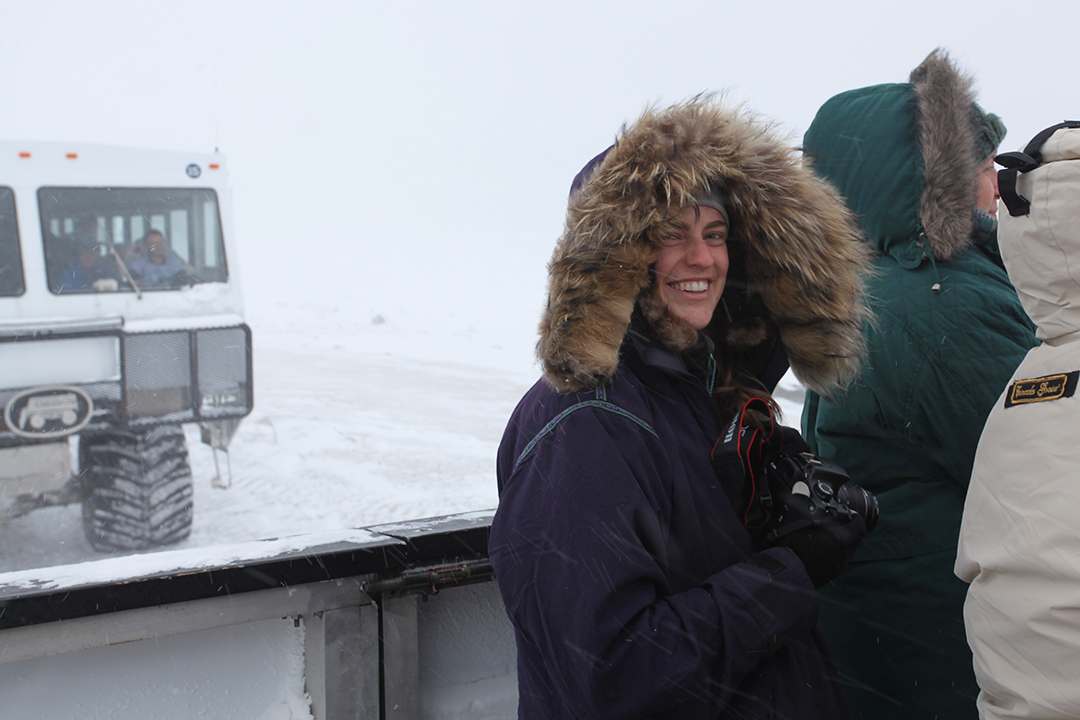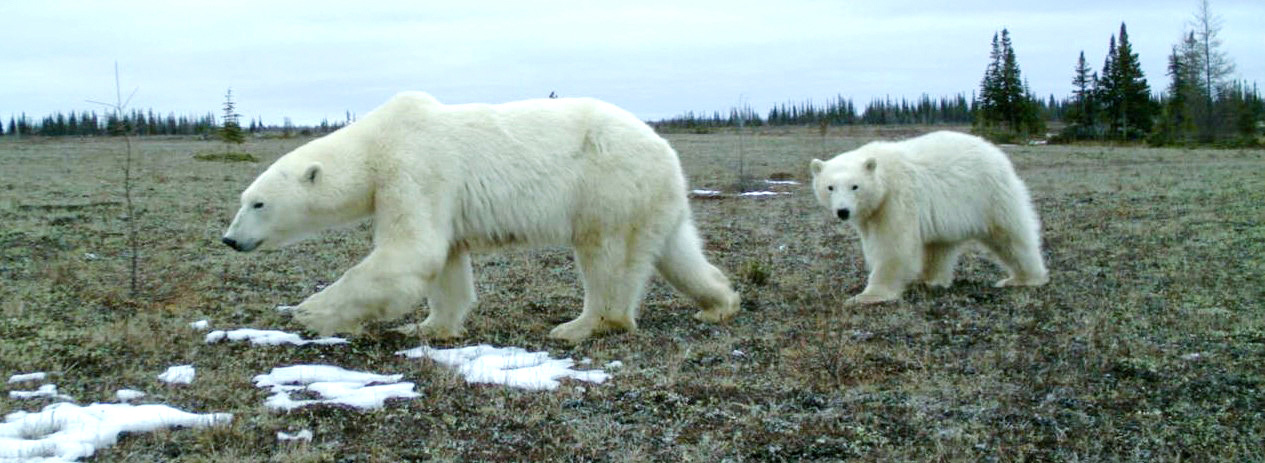
SENS student researching polar bear-human conflicts
Katie Manning is putting her skills to work studying local knowledge of polar bear-human conflicts in northern Manitoba.
By Megan EvansManning, a wilderness adventure guide turned master’s student at the University of Saskatchewan (USask), credits lucky timing for her acceptance into graduate school.
But her supervisor, USask’s School of Environment and Sustainability (SENS) professor Dr. Doug Clark (PhD), said her curriculum vitae and previous experience as a wilderness and dogsledding guide for Minnesota’s Outward Bound School has proven her ability to handle some of the extreme conditions that come with the territory of studying polar and grizzly bears.
Working for Outward Bound, Manning lived and travelled on her own for anywhere from one week to 50 days at a time, with groups of middle school students or at-risk youth, and even a 71-year old war veteran, among others.
“Katie’s expedition leadership experience has clearly prepared her not only to work well with our northern partners, but also to adapt her research plans to pandemic conditions and keep it going,” said Clark. “This highly-competitive scholarship is a well-deserved acknowledgment of her capabilities.”
Manning, a second-year student in SENS, is a recent recipient of a Canada Graduate Scholarship from the Social Science and Humanities Research Council (SSHRC). Her study is focused on empowering northerners to take more active roles in wildlife monitoring and research.
“Historically, the use of scientific, traditional, and local knowledge has not been weighted equally when creating species conservation plans, resulting in marginalization of local and Indigenous perspectives,” Manning said. “The inequity of stakeholder opinions means that citizens of Churchill, Manitoba, have limited options for input into polar bear management, but they are the ones who ultimately have to live with the consequences of any conservation plan. This can leave local people feeling like bear lives matter more than their own, re-enforcing external existing power structures, and oversimplifying the relationship between the locals, the land, and the wildlife.”

This problem is expected to be similar with grizzly bears. Although classified as extirpated in Manitoba, grizzly bears migrating from Nunavut bring unique governance and legislation challenges related to species management. Manning’s study seeks to answer how community members’ perceptions of risk are influenced by species familiarity (polar vs. grizzly bears) and how local knowledge applies or can be applied to a new incoming grizzly bear population.
Her study methods will include interviews with hunters, trappers, and local and traditional knowledge holders to gather risk perceptions. Trail cameras will be used to test community-generated hypotheses about grizzly and polar bear activity and risks of conflicts with people.
“There is a desire by Churchill locals to find pre-emptive solutions to potential human-grizzly bear conflicts. Due to the design of this study, community members have the opportunity to share and engage with traditional practices, as well as begin creating new local knowledge specific to the grizzly bear population,” Manning said.
There are a lot of questions about grizzly bear activity, habits, and behaviour in and around the Churchill area, and characteristics cannot be blindly applied between different bear populations, Manning said. Determining what is true for this grizzly bear population is the first step in building the local ecological knowledge and pivotal to any successful co-existence planning.
While COVID-19 put many student research projects in limbo, Manning’s project was able to continue without issue.
“It’s disappointing that I don’t get to spend more time in the community, but because I’m able to complete interviews over the phone, it’s been an easy transition for me,” she said. “In some ways, I think this might even make the interviews easier to complete; I get to ask a lot of questions, and no one has to make eye contact—it doesn’t feel as intimate ...
“It feels serendipitous that this topic is getting national attention and that as a national grizzly bear management plan is being explored, we can put locals’ perspectives and wishes out at the same time, rather than leaving Churchill to have to bend and retroactively fit the expectations. I think if we want to foster long-lasting northern conservation plans, then we need to be better at weighting the considerations of the people that live, work, and rely on those landscapes.”
Article re-posted on .
View original article.

